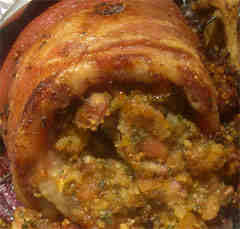Self Publishing
Posted by Fiona Nevile in Discoveries | 1 comment If you love books you may have considered writing one yourself. Perhaps you have written a book and have had it rejected. If the latter is the case you are one of many disheartened writers and are probably wondering what you should do next.
If you love books you may have considered writing one yourself. Perhaps you have written a book and have had it rejected. If the latter is the case you are one of many disheartened writers and are probably wondering what you should do next.
Did you know that eminent writers such as Rudyard Kipling, Lord Byron, Virginia Wolf, D H Lawrence, Robbie Burns, Beatrix Potter and many others were self published authors?
Recently Danny came into contact with George M Talbot, author of Dark Glass Pt 1. D thought it a great read and says:
“Dark Glass Pt 1 is a marvellous crossover where science fiction melds into mainstream in the same way as Philip Pullman’s Dark Materials trilogy. Just as good, if not better, Dark Glass tells the tale of how a sceptical top psychiatrist struggles to accept events he witnesses in a mental institution that break all the rules of accepted reality. George builds the suspense to an exquisite pitch of tension before . . . Let’s not spoil the pleasure for you. It’s enough to know that I am half way through re-reading it, something I never normally do until several years have passed. ”
George told Danny all about the problems he had trying to get his work published over a period of twelve years. He is a multi-genre writer and has written fourteen books while in full time employment. He pointed out that the chances of being published by a mainstream publisher in the traditional way are almost zero. This is due to the sheer volume of books being written. Official records confirm that more than 100,000 new books are published every year. Of course the publishers cannot handle the massive amount of sample chapters which land on their desks. George believes that no more than 1% are actually read. The rest receive the standard rejection slip.
Many budding authors give up, convinced that they must be sub-standard. George never gave up. He was certain of his ability because he had tested his writing by giving it for review to people that he didn’t know personally. Nine out of ten loved his writing. They all expressed disbelief when he told them that the publishers had rejected the work.
Eventually a small publisher read his book Dark Glass Pt 1 and was willing to publish it, but under a subsidised deal. They could not take a 100 % risk on a completely unknown author. George would have to contribute to production costs.
George reluctantly accepted. Pegasus published Dark Glass Pt 1 under their Vanguard Press imprint. For a book to be successful it has to be a good read, obviously. But there is more to self publishing than that. What is never mentioned is that the marketing and distribution are the key to a book’s success.
Getting a book on the shelves of the major booksellers is far harder than writing it. In fact, it seems to be nearly insurmountable. Big publishers actually pay for shelf space. That’s why they are so careful when they select new authors. Like any manufacturer, they need to be very confident that the stock they display for public consumption is saleable.
George knew this when he accepted the Pegasus deal. Complete self publishing is a lot of work. Having written your masterpiece, you have to spend time arranging the cover design, layout, ISBN number, wholesaling, distribution, accounts, royalties and the marketing.
Marketing and distribution is paramount. You can’t just roll up to WH Smith with a bulging carrier bag and ask if they want to display your book on their shelves. Self publishing gives you full control but, unless you have a publishing/distribution background, your self publication venture will probably flounder if you don’t know the ropes.
If you are rejected by the major publishers you have three options: give up, self publish or subsidy publish. George chose the subsidy route because it allowed him to carry on writing whilst all of the work was done for him by a company who had experience in the field.
He reckons that subsidy publishing is actually cheaper than self publishing in the long run. It takes a full year before publisher and author have an inking of the likely success of a new title from an unknown author. Success is difficult when a small publisher like Pegasus cannot afford to buy prominent shelf space.
Meanwhile, George is beavering away, writing and doing the best marketing in the world – talking about his book. Dark Glass Pt 1 is listed on 37 internet sites of 94 that influence book sales. Amazon is the significant one. Gradually he is getting known through these sites.
His second subsidised book, Tulpa, is due out in about eight weeks.
How much does it cost to subsidy-publish?
It varies enormously and you should shop around for the best deal.
The subsidy payable by the author is between 5% – 20% of production costs but could be very much higher. Production costs are based on one year’s projection for all aspects: production, distribution, marketing, etc. There are various packages and so the actual amount in cash terms could be substantial.
Royalties can be between 15% – 30% or more of net profit. Typically between 25p – 45p per copy sold because books get discounted and prices vary from place to place. About 30p on average. Again, deals and packages vary.
An unknown author with no shelf space cannot expect to sell more than 1,000 copies in the first year. Obviously the chances of recouping your investment are slim. But suppose a film producer liked it then that would be different scenario entirely, however unlikely.
In a nutshell, if you know your work is good then you deserve to see it published and read. Financial gain need not be the sole motive. Then again, there’s nothing wrong with the desire for fame and fortune.
Leave a reply






One should NEVER pay to subsidise the publication of one’s work. It is the task of the publisher, upon accepting a manuscript, to pay the author.